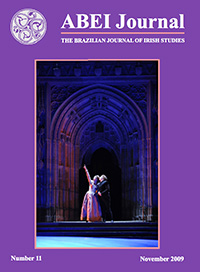Rewriting the “caoineadh”: Dermot Bolger’s The Lament for Arthur Cleary
DOI:
https://doi.org/10.37389/abei.v11i0.3647Palabras clave:
Dermot Bolger, Caoineadh, The Lament for Arthur ClearyResumen
Dermot Bolger’s play The Lament for Arthur Cleary is an experimental and innovative work focusing on the context of suburban Dublin life and on the character of a migrant worker. In the background of a Dublin that has become a prey of unemployment, poverty and heroin, Bolger reconstructs and rewrites the eighteenth-century Gaelic poem Caoineadh Airt Uí Laoghaire in order to face and discuss issues of contemporary Irish life. However, the use and/or distortion of typical features of a traditional “caoineadh” are at the basis of the play, whose structure and organisation rework motifs and elements to be found
in Caoineadh Airt Uí Laoghaire and in the keening tradition at large.
The purpose of this essay is to analyse Bolger’s The Lament for Arthur Cleary vis-à-vis Caoineadh Airt Uí Laoghaire, identifying images and structural elements that are reworked and rewritten in the structural organisation of the play.


